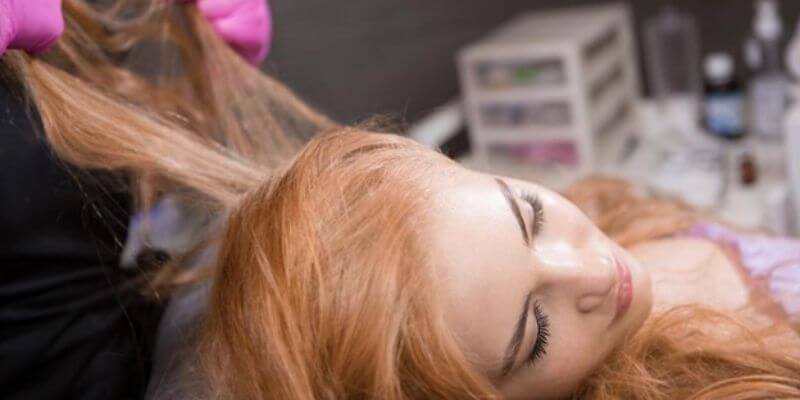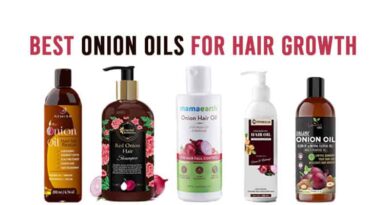How to Analyze a Hair Client’s Scalp Health
In the world of professional hair care, understanding scalp health is vital. It’s the key to crafting personalized and effective hair care regimens for luscious, radiant locks. The journey begins with mastering the art of scalp health analysis, a skill that sets you apart in the world of hair care professionals.
This guide will lead you through analyzing a client’s scalp health. Whether you are a seasoned stylist looking to expand your expertise or an individual seeking to gain a deeper understanding of scalp wellness, this article serves as your comprehensive resource and will help you better understand what professional hair care products best suit your clients’ needs. Let’s dive in!
Table of Contents
The Initial Scalp Assessment
The initial assessment is your introduction to a client’s hair and scalp profile. It’s not just about the cut and style. It’s about building a connection with your client and their hair. Gather information about their hair history, concerns and aspirations and ask about their lifestyle and medical history, which can influence scalp health.
Stress, diet and medications can directly affect their scalp health. For instance, stress can lead to an oily scalp, while a nutrient-poor diet can result in dryness and itchiness. This is why learning about your client’s health and lifestyle is so important.
A trained eye is your most potent tool in scalp analysis. Observe the scalp’s texture, color and surface conditions closely. A healthy scalp is usually smooth and supple, while an unhealthy one may be rough or flaky. Color can reveal a well-balanced, hydrated scalp with a consistent skin tone. Note any irregularities, such as redness or inflammation.
The hair’s condition tells a lot about scalp health, too. And it plays a vital role in creating custom hair treatment protocols.
Analyzing Hair Texture
Before embarking on any customized hair treatment, you need to understand the hair’s texture. This step lays the groundwork for tailoring the treatment to suit a client’s unique needs, ultimately leading to more successful and satisfying results.

The Process:
To accurately assess hair texture, follow these simple steps:
- Select a strand of hair from the crown area of the client’s head. This section typically represents the overall texture of their hair.
- Position the selected strand between your thumb and index finger, gripping it near the root.
- Gently slide your fingers upward along the strand. As you do so, take note of the thickness. Hair texture falls into three categories: fine, medium or coarse.
- Fine Hair: If the strand feels delicate and thin, it falls into the “fine” category.
- Medium Hair: When the strand is moderately thick, it’s classified as “medium” hair.
- Coarse Hair: If the strand feels notably thick and robust, it is categorized as “coarse” hair.
This quick and straightforward analysis of hair texture provides valuable insights into the individual characteristics of each strand. With this knowledge, you can decide which treatments and products will benefit your client’s hair type, ultimately leading to more favorable and effective outcomes.
Testing Hair Elasticity
Elasticity, in the context of hair, refers to the hair’s ability to stretch and return to its original shape without breakage. This property is directly linked to the condition of the hair’s cortex, which is the innermost layer responsible for providing strength and resilience to each strand. Elasticity testing provides valuable insights into whether the hair is in optimal health or if there are underlying issues that require attention.
The Elasticity Test:
- Select a small section of damp hair, as moisture helps mimic real-world conditions. This section should be representative of the hair’s overall condition.
- Hold the selected strand of hair between your thumb and index finger firmly but not excessively tight. The idea is to have a secure grip without causing unnecessary stress to the strand.
- Gently stretch the hair. Healthy hair typically expands up to 1/4 of its original length without breaking.
- As you stretch the hair, pay close attention to its behavior. Healthy hair should readily return to its normal size once you release the tension. This indicates that the cortex is in good condition. Porous or damaged hair exhibits different behaviors. It might stretch beyond the 1/4 limit, lose its form or, in severe cases, break off. These signs suggest that the hair may have underlying issues, such as excessive dryness, damage or loss of essential proteins.

Assessing Hair Porosity
When it comes to ensuring lasting hair color and safeguarding against fading, many stylists overlook one crucial step: assessing hair porosity. This simple yet vital pre-color service or treatment practice helps measure the existing damage to the hair cuticle, allowing for more informed decisions and improved results.
How to Assess Porosity:
- Begin by choosing a small section of hair for examination. This section should be clean and dry, without any styling products or residue that might interfere with the assessment.
- Hold the selected hair section between your thumb and index finger, ensuring a uniform and firm grip. This will help you get a more accurate sense of the hair’s condition.
- Gently slide your thumb and index finger up and down the hair shaft. As you do this, note how the hair interacts with light. Healthy, undamaged hair will typically reflect light, appearing smooth and shiny.
- While sliding your fingers, also pay attention to any sensations of roughness or resistance. Hair with higher porosity tends to feel rougher and may resist your touch.
- Based on your observations, you can categorize the hair’s porosity into different levels:
- Low Porosity: Hair that reflects light well and feels smooth. This indicates a healthy, less porous cuticle.
- Normal Porosity: Hair that reflects some light and feels moderately smooth. It suggests a balance between porous and non-porous areas.
- High Porosity: Hair that appears dull, absorbs light and feels rough. This suggests a more porous cuticle, often due to damage or previous treatments.
Prioritizing Hair Health from Root to Tip
By mastering the art of assessing a hair client’s scalp, you’ll be better equipped to provide professional hair care from a hair supply store that addresses the root of any issue they may face. A healthy scalp serves as the foundation for vibrant, beautiful hair, and your expertise in this area will set you apart in the world of hair care.
Recommended Articles:
Hair Growth Devices For Hair Replacement
Treatments to Control Female Hair Loss
Is a Water Softener the Solution for Dry Hair in Winter?




